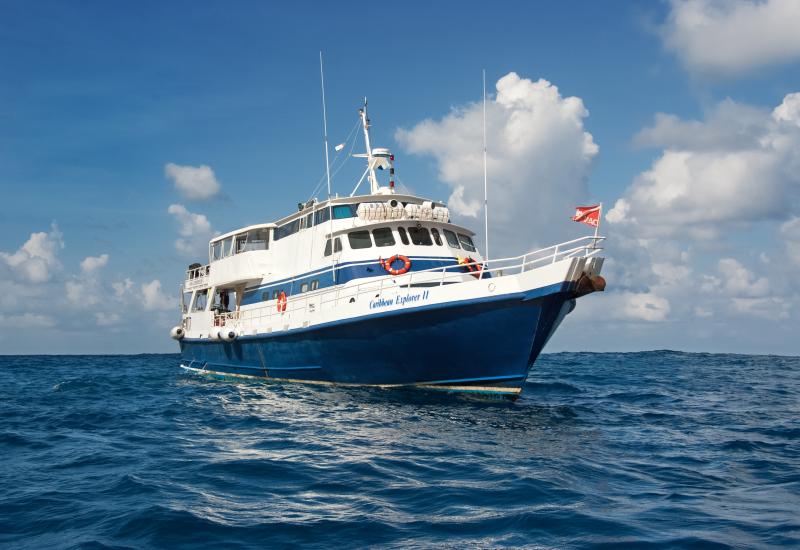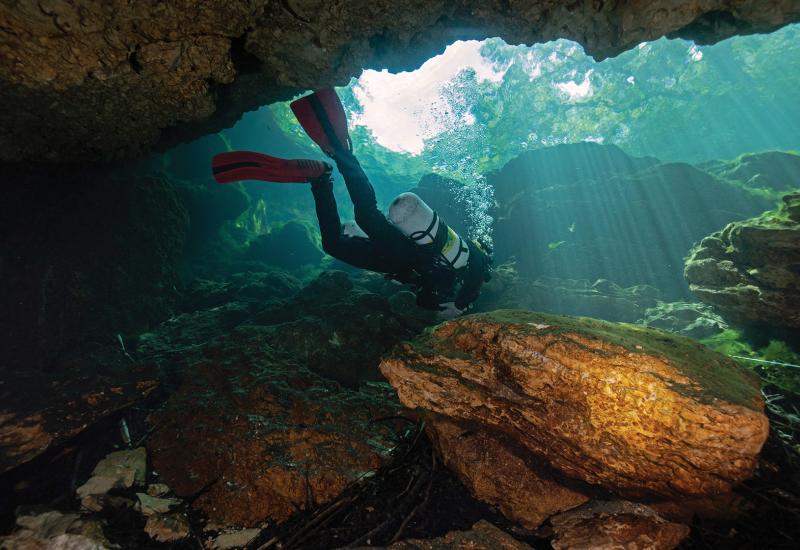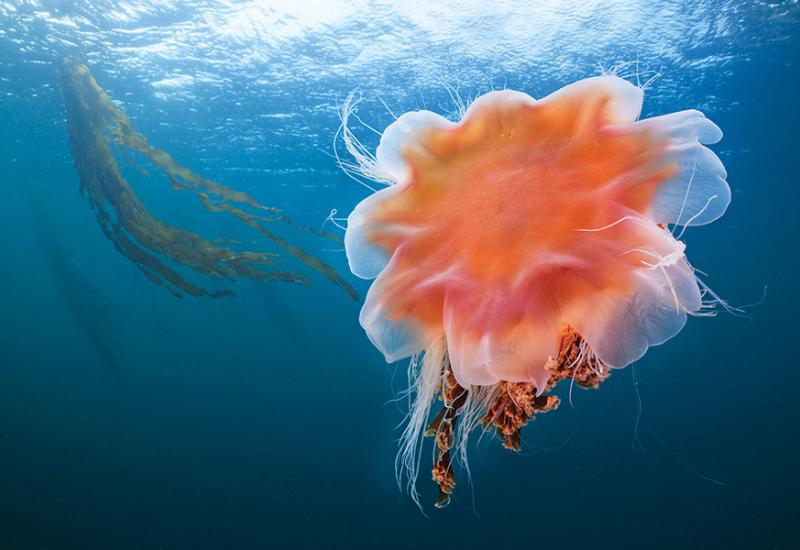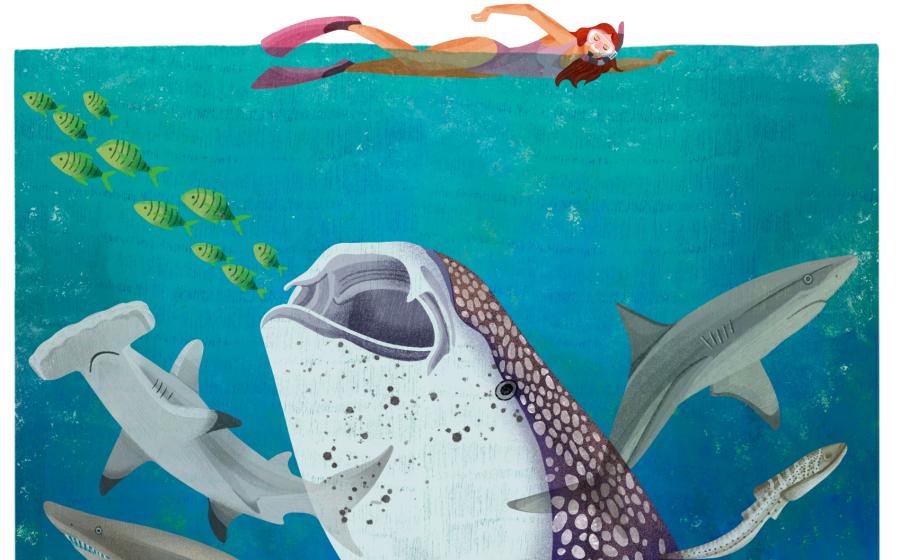Chasing the Real Cousteau in Provence
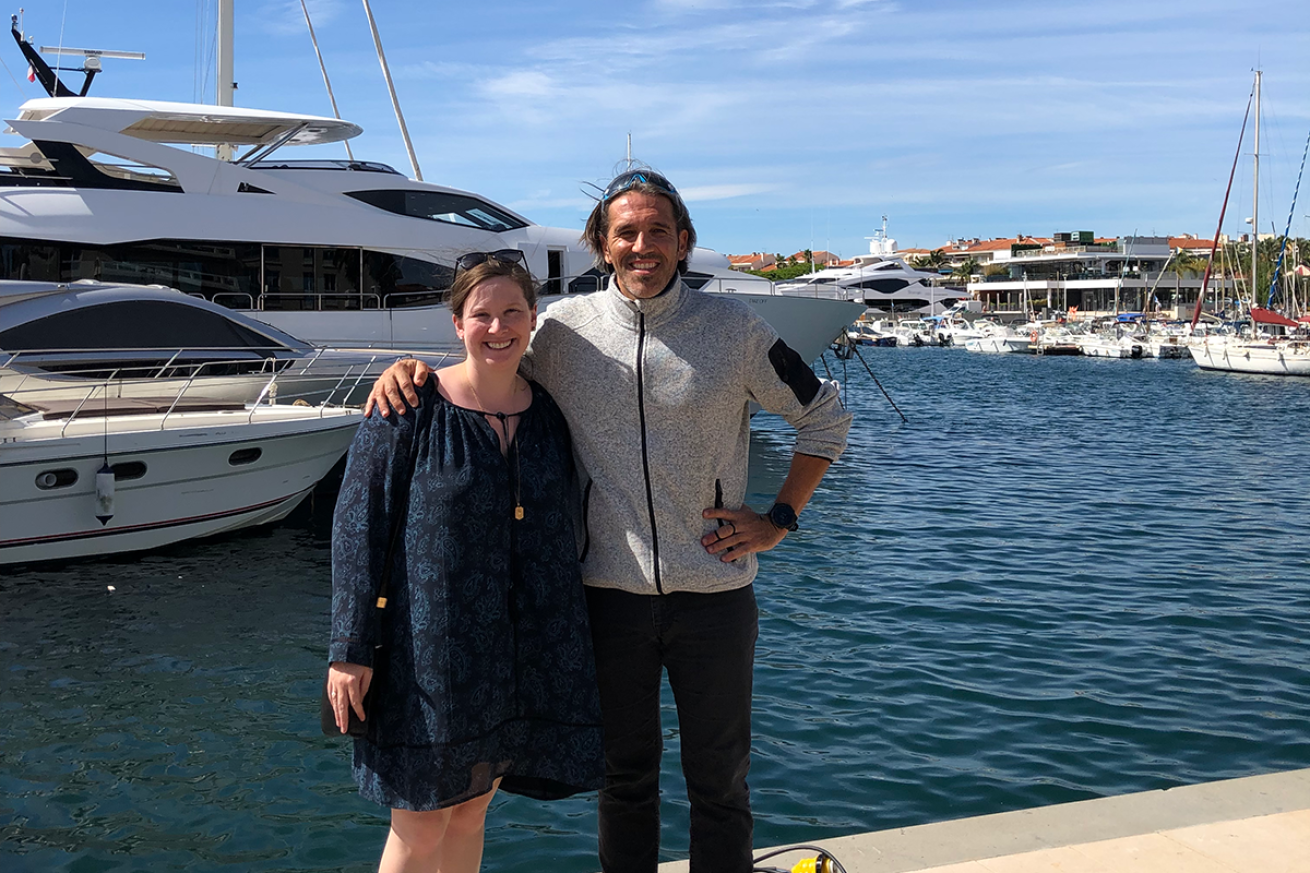
Courtesy ImageThe author (left) stands with Cédric Genin, the French freediving champion and coach, in Saint-Raphaël.
With his first underwater breath, Captain Jacques-Yves Cousteau changed the world forever. His co-invention of the Aqualung, the key to modern scuba diving, would catalyze his legendary adventures and triumphs, his Oscar-winning films and paradigm-shifting television shows, his historic excavations and scientific discoveries. Even now, 25 years after his passing, Cousteau’s trademark red wool cap and yellow sub spark intense nostalgia—evoking a man larger than life, apart from the rest.
In the grand scope of these worldwide adventures, Cousteau touched nowhere quite like the French Mediterranean. It was on his native shores that he began his storied career, where he invented and popularized recreational diving. In the south of France, he is more than a legend—he is a man who sailed and swam in his own backyard before coming home for dinner. He helped launch the careers of friends, colleagues and family, many of whom are still writing the next chapters of diving in France and worldwide.
I wanted to feel this local legacy firsthand, to know the hometown hero instead of the untouchable icon. To do that, I decided, I had to experience the waters that shaped Cousteau before he shaped the rest of us.
The Cradle of Scuba Diving
“One morning in June, 1943, I went to the railway station at Bandol on the French Riviera and received a wooden case expressed from Paris,” wrote Cousteau in his 1953 book, Le Monde du Silence (The Silent World). “In it was a new and promising device, the result of years of struggle and dreams, an automatic compressed-air diving lung conceived by Emile Gagnan and myself. I rushed it to Villa Barry where my diving comrades, Philippe Tailliez and Frédéric Dumas waited. No children ever opened a Christmas present with more excitement than ours when we unpacked the first ‘aqualung.’ If it worked, diving could be revolutionized.”
Today on Plage de Barry, the sheltered cove where Cousteau and his team successfully tested the first open-circuit, self-contained underwater breathing apparatus (SCUBA), visitors find only a modest plaque acknowledging the trio’s transformative achievement. A few miles east in Sanary-sur-Mer, the quaint fishing town that served as Cousteau’s family home, the Musée Frédéric Dumas offers a more engaging tribute. Diving buffs can gawk at an original regulator the size of an alarm clock, as well as glass goggles, unwieldy leather fins and other pieces of vintage gear that look like they leapt from the pages of Jules Verne.
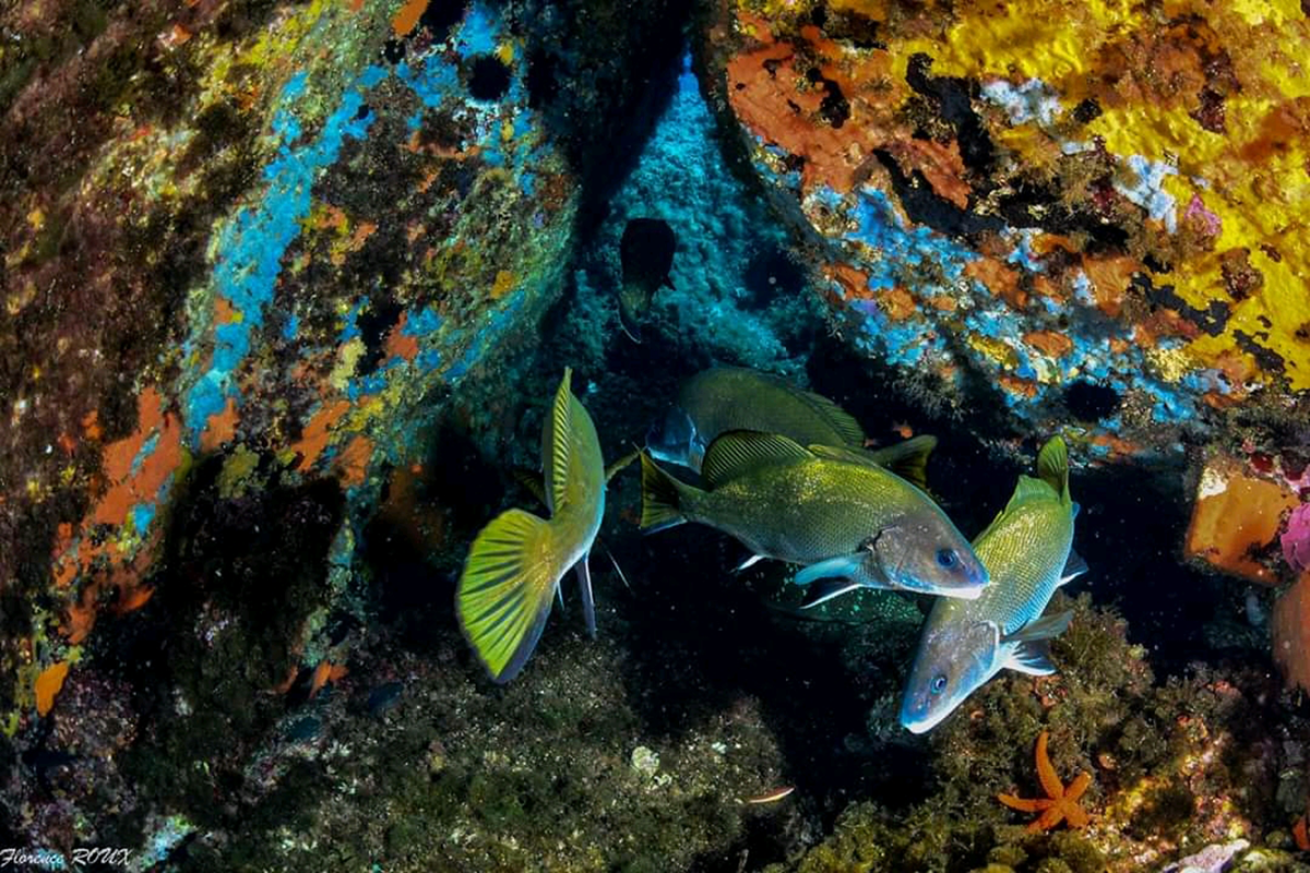
Lecques AquanautFish swim in les Grottes.
During his experiment in Bandol, Cousteau admires the “tantalizing crevices” of the seascape’s tunnels. He’s met with lobsters crowding the roof of a cave “like great flies on a ceiling.” While Plage de Barry is not a popular dive site nearly 80 years later, les Grottes in neighboring Saint-Cyr-sur-Mer provide a window into the area’s many alluring grottos carved into the steeply falling seabed. As it’s put in a traditional local song: “Ce beau pays où poussent les cailloux.” This beautiful country where the stones grow.
During my dive with the local club Lecques Aquanaut, I follow my guide into the yawning entrance of a murky cave to find it crawling with animals: dotted nudibranch that would be at home in a contemporary art museum, bug-eyed blennies, and of course, the spiny langoustines that awed Cousteau. I slow to a crawl, pausing to inspect the cave’s hiding places. I spot a grouper flashing briefly between cracks in a wall cavity and scorpionfish masking themselves on the rock. We could play ‘Where’s Waldo?’ here for hours, but the brilliant Mediterranean blue shining at the other end—and our no-decompression limit—call us back to reality.
Birth of a Documentarian
A mere year before that seminal scuba dive in Bandol, Cousteau created his inaugural documentary. He produced Par dix-huit mètres de fond (18 Meters Deep)—France’s first underwater film—while freediving with Dumas and Tailliez. He made it using a crafty 35mm camera in a depth-pressure-proof case developed by mechanical engineer Léon Vèche, an engineer at the Naval College. The short shows Dumas (who Cousteau praised as “the best goggle diver in France”) hunting gilt-head bream and grouper, plucking crabs the size of dinner plates from the waters surrounding the virgin Embiez archipelago.
The area has maintained its Eden-like status. I ride out to la Balise des Magnons, one of Cousteau’s favorite sites in the archipelago, with the owners of Le Brusc Plongée, Eric Cantarini and Stéphane Desrat. The mythic Mistral wind had dropped the water temperature nearly 15 degrees overnight to 58 Fahrenheit. As I cling desperately to my 5mm wetsuit, I watch a French diver pull up his shorty and remember Dumas’ tiny woolen bathers in Par dix-huit mètres de fond. The water is too brisk even for the fish, I think, as I spot the bream huddling together for warmth in the crevices of the rock. Discouraged, I sink into the depths, dropping past the thermocline down to 100 feet to watch writhing snakelocks anemones and aspirating moray eels.
Apparently, I’m playing it safe. In France, guided by Fédération Française d'Études et de Sports Sous-Marins (FFESSM) divers often push themselves to the brink, plunging as long and deep as possible.
“For the French, 40 meters [130 feet] is an average dive,” says Anaïs Lefrère, business development manager at Dune United, an international network of Liveaboards and Dive Centres. “Below 40 meters you go into deco, but we don’t plan like crazy. There is a pride in saying we invented diving and our training is really strict and good.” To receive the equivalent of PADI Open Water Diver, French divers must train for a full year. “Like Cousteau, all the first French instructors were ex-military. My grandpa was instructor number 39. But this is less and less true with the new generation of divers. It’s not the army anymore—it’s a hobby.”
Shipshape
It takes diving deep to reach the site of the world’s first underwater archaeological excavation. One of Cousteau’s most famous discoveries, Le Grand Congloué on the Riou archipelago of the Parc national des Calanques hid two B.C. Roman ships that sank a century apart in the same perilously rocky location. He found the wrecks at nearly 150 feet in 1952 after a tip from a grateful fisherman he saved from a decompression accident. Allegedly, wayward lobsters were poking around some old “jugs” lodged on the seafloor. Instead of dinner, Cousteau uncovered a windfall.
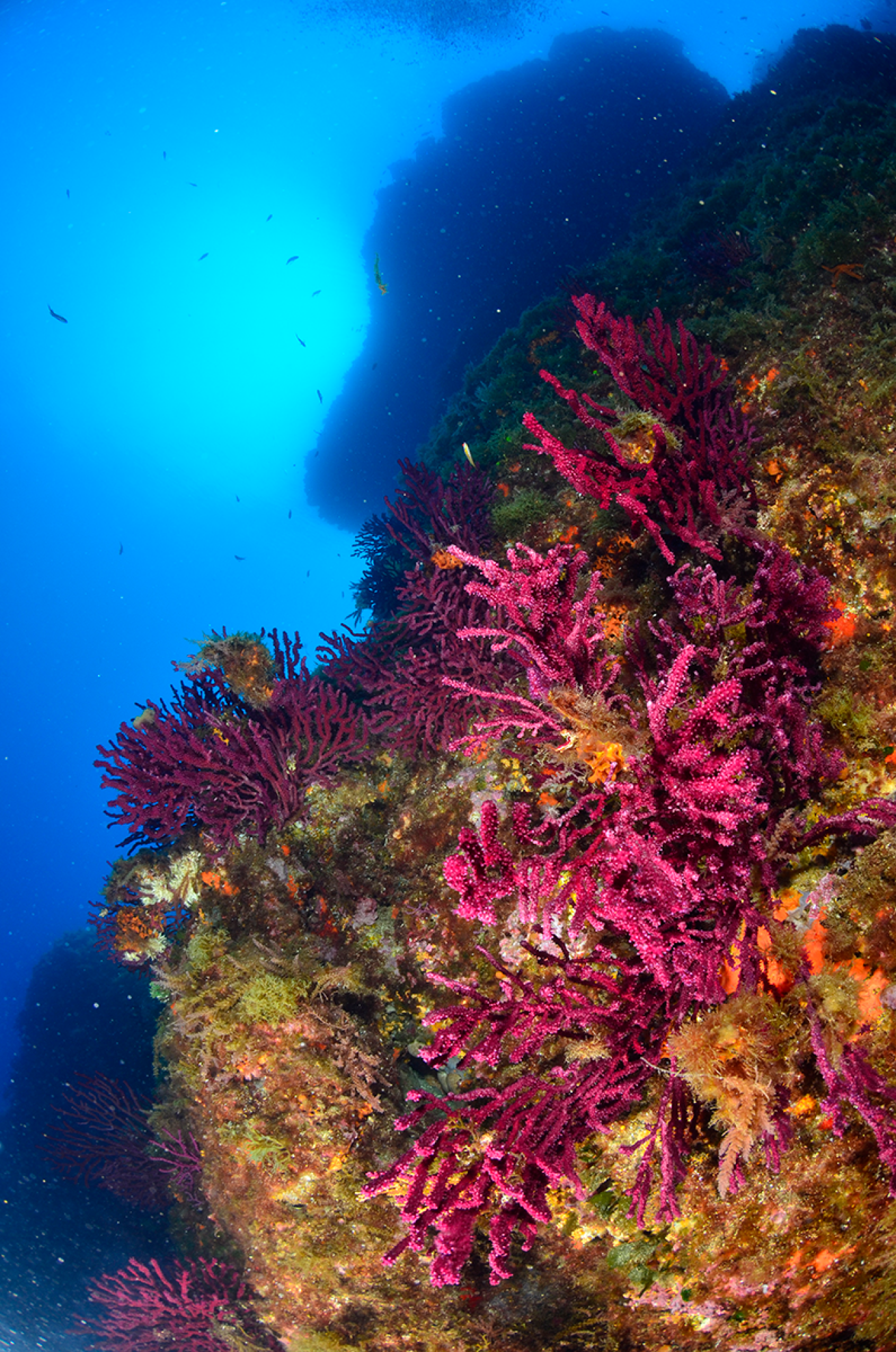
François Scorsonelli/FFESSMWreckage of the Grand Congloué.
The Calypso team made off with thousands of wine amphoras, ceramics and pieces of tableware. Today, many of these artifacts are exhibited at institutions like Musée des Docks Romains in Marseille, while some amphoras of lesser value are affixed to the seabed with steel wires 46 feet deep near on the Frioul archipelago coast to create a more accessible dive site.
Because of Le Grand Congloué’s depth and strong currents, it’s often challenging to reach even for experienced divers—and there’s not much left if you do, as time and unregulated wreck excavation have taken most of the site elsewhere. But much of the Parc national des Calanques, which became a maritime refuge in 2012, boasts the same rugged beauty and exceptional biodiversity. Lefrère and I opt to explore the nearby Les Moyades, a beautiful canyon and drop off. Among the fields of posidonia, a seagrass that fuels the Mediterranean ecosystem, we spot an astonishing amount of life that I had only ever witnessed on coral reefs. Electric damselfish, psychedelic pink anthias and silvery yellow saupes weave in and out of vegetation. Suddenly, a long, streamlined shape floats into our periphery: A barracuda stalking a massive school of bream. We watch, our breath catching in anticipation, waiting for it to strike. But the barracuda simply darts around for a few minutes, letting its nervous prey scatter into exquisite, choreographed formations like a syncopated, interpretive dance.
Modern Mediterranean
The ongoing rehabilitation of the Mediterranean—which The Cousteau Society still refers to as a “wounded sea”—has cause for optimism. Inspired in part by the Cousteau, an entire generation of French divers have aspired to fill the Captain’s fins, to carry on his legacy of exploration and environmentalism.
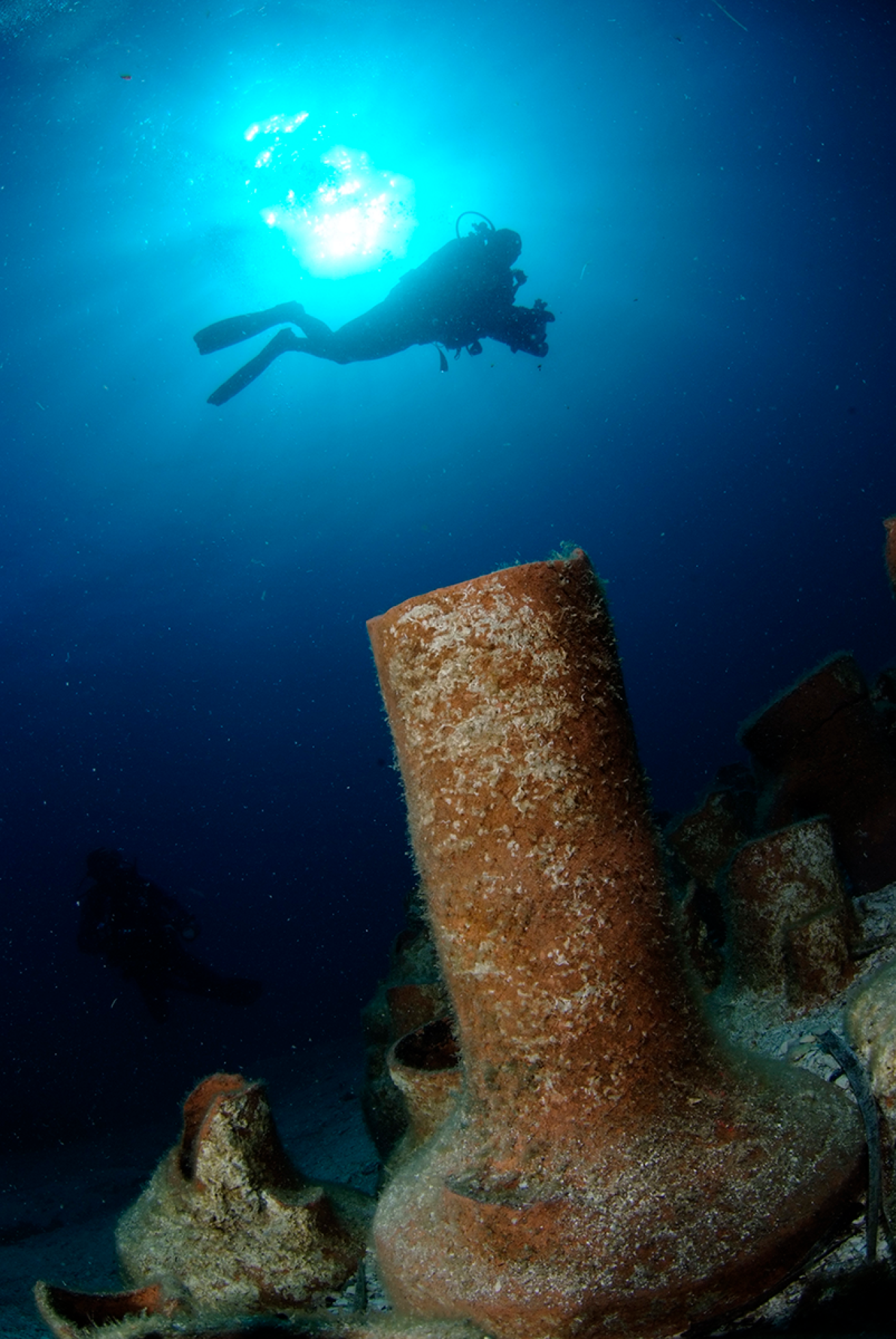
François Scorsonelli/FFESSMA diver swims past benthic amphorae.
“You can ask any French scuba diver how he came to diving, and I think at some point Cousteau will come into the conversation,” says Lefrère. The luckiest—and most experienced—of them were on the Calypso itself. “When I was young, everybody was watching Cousteau’s television program on Sunday afternoon,” says Grégoire Koulbanis, who served as one of the crew’s heads of expeditions from 1988 to 1997. “For me, it was a dream. At that time he was already old. But in the water, he was like a young man again. He was so happy.”
Another crew member, oceanographer François Sarano, went on to set up Longitude 181, an international organization dedicated to protecting the ocean. It runs a “School of the Sea”— overseen by French freediving champion and coach Cédric Genin—to provide freediving classes and interactive courses on topics like marine food chains and pollution. “I want to give the children the ability to discover something so they will want to protect it,” Genin says, echoing Cousteau’s own oft-quoted sentiment: “People protect what they love.”
Later, while pulling together my gear for a morning group dive at the Frioul archipelago, I notice an unusual energy. The stern quiet that so often sweeps a boat as divers triple check their air and releases is interrupted by a wave of infectious, excited chatter. Eight young teenagers awkwardly fidgeting with their BCD straps and masks are joining us as part of Le Bateau Jaune club’s youth program for their baptême de plongée (trial dive) or literally, diving baptism. Here, it seems, diving truly is a religion. We soon anchor at Île Pomègues, and I leave them to their instructors as my buddy and I slip underwater. Finning slowly around the rocks, fork beards peek from behind yellow gorgonians. A juvenile octopus prematurely panics and squirts ink as it shoots away. Inquisitive, slack-jawed groupers are less fearful, boldly sidling up to us like the friendly Jojo in Le Monde du Silence.
By the time we return, the young divers have finished their lesson and are snorkeling in the calm waters. I wonder if they’re aware that at this same site in 1962, Cousteau set up Conshelf I, the first of his underwater settlement experiments. Only a few scraps of metal remain there today. I join them in Calanque des Cambrettes, where an unusual number of fried egg jellyfish have drifted in. Waving a couple kids over, I motion for them to stay still and watch. In between the jellies’ undulating folds, a dozen or so small fish have taken shelter and are peering out at us. Soon a group has gathered, locked in and fascinated by the ocean’s little show.
As I watch them, Lefrère’s voice echoes in my head: “We’re all children of Cousteau.”


